
VERDI KING LEAR
PROJECT FOR VERDI FESTIVAL 2015
Lenz’s exploration of Shakespearean dramaturgy continues in a new performative-musical chapter dedicated to King Lear that will take place next October at Verdi Festival 2015. After the study-premise presented at the last edition of the International Festival Natura Dèi Teatri,Verdi King Lear -the ‘missing’ work of Giuseppe Verdi – comes to life through the important artistic collaboration between the great British electronic musician Robin Rimbaud aka Scanner, Lenz Theater and the Music Academy Arrigo Boito.
The project traces a journey of research and reconstruction of all the elements of Verdi’s scattered and unfinished creative desire to proceed then, to an “invention” of a performance and musical simulacrum work of art which draws the essential elements of its manifestation, to its representation from Shakespeare’s and Verdi’s Lear.
[…] Another bold, powerful and dramatic investigation of past and present, between memory and modernity, made by Maria Federica Maestri and Francesco Pititto.
Giuseppe Distefano, Artribute
- Photo
- Intro
- Credits
- Conversation on Verdi's King Lear
- Robin Rimbaud aka Scanner
- Info e Biglietti
- Video
- Press
- Brochure
«It’s a further, audacious and powerful dramaturgical inquiry between past and present, memory and the now, that which is committed by Maria Federica Maestri and Francesco Pititto, a project around and within a work that doesn’t exist, of which we have only faint traces, fragmented clues. The unfinished work is Giuseppe Verdi’s King Lear, a show never set to music, of which we only have Antonio Somma’s existing booklet containing the composer’s own corrections. A much sought after work, ready to pierce into the soul of the king/father/madman, but never brought to fruition».
The renowned theatre critic Giuseppe Distefano, after the first presentation of Verdi King Lear – The nonexistant work, prefacing the 19th edition of the Festival Internazionale Natura Dèi Teatri of last December, notes: «The installationally pictorial vision is of a silhouette of an immobile group standing around a throne placed at the back of the scene, made evanescent by three transparent veils whereupon, on multiple layers of projection, the image of a man, Lear, flows as we hear his voice. The camera’s focus lingers on his body, coiled or collapsed, as if making a map of it, investigating the impulses and wounds of his soul […] The plastic depositions from the throne to the ground, the solemn gait and positioning, the dragging of a rope on a leash and the scattered “airs” all provide moments of authentic emotion – as per the finale of Simon Boccanegra, “As in this dusky hour…” – that constellate Verdi’s universe about the tragedy of fatherhood, which Lenz transforms into a scenic epiphany of desire».
The completed show will be «a simulacrum of performance and musical arts that’s based upon both William Shakespeare’s and Giuseppe Verdi’s Lear within the fundamental elements of its manifestation», combining two presences which appear decisively unlike one another: the English electronic music composer Robin Rimbaud, a.k.a. Scanner, and singers from the Music Academy Arrigo Boito in Parma.
It’s an audacious pairing, born and carried through by the will to experiment with new forms of creative entwining between melodrama, new compositions, real and virtual scenic design, different styles of acting and song, unplugged music and electronica. Verdi King Lear will live within the two grand halls of Lenz Theatre, as the public will be invited to move freely between the two spaces.
Maria Federica Masters, who’s responsible for the artistic installations and costumes, explains the reasoning behind this unusual choice: «The temporal link between two separate spatial planes preserves and highlights the semi-virtual duplicity of the work, which connects real and unreal, traces and wishes: the materiality of bodies, conversing with the immateriality of images, creates a dream-image. The semi-virtual image, built upon tears, thefts and leaps, produces a continuous detachment from the coherent image of the world; analogously, spectators in delocalized fruition, in subjective transit, in the passage between space and other space, lose the unity and linearity of traditional vision, and in total harmony with the artistic form of the work –to give scenic shape to a wish- they recreate their own personal memory-oeuvre». Francesco Pititto, who’s responsible for the visual and performative dramaturgy of this stellar project, concludes: «To give shape to desire, after having fathomed its primary impulses and most hidden expressions, is the fascinating path of every linguistic pursuit; to dress a ghost and see it move solely through the motions of its cloth is already delivering it unto the real world, which, in a Shakespearian twist, is made out of dreams and nothings».
From King Lear
by William Shakespare and Giuseppe Verdi
Research, Visual and performative dramaturgy | Francesco Pititto
Installation, Costumes | Maria Federica Masters
Live electronics | Robin Rimbaud aka Scanner
Music consulting | Carla Delphrates
Singing consulting | Donatella Saccardi
Performers | Valentina Barbarini, Barbara Voghera
Singers| Student of Music Academy Arrigo Boito
Duration | 50′
In collaboration with Music Academy Arrigo Boito, Parma
Lenz Foundation projects for Festival Verdi 2015
CONVERSATION AROUND VERDI KING LEAR
Ridotto of the Teatro Regio of Parma
Friday 2nd October 2015, at 17.30, Free admission
With FRANCESCO PITITTO, MARIA FEDERICA MAESTRI,
CARLA DELFRATE, DONATELLA SACCARDI
Scanner – British artist Robin Rimbaud traverses the experimental terrain between sound, space, image and form, creating absorbing, multi-layered sound pieces that twist technology in unconventional ways. From his early controversial work using found mobile phone conversations, through to his focus on trawling the hidden noise of the modern metropolis as the symbol of the place where hidden meanings and missed contacts emerge, his restless explorations have won him international admiration from amongst others, Bjork, Aphex Twin andStockhausen.
His work connects the points between a bewilderingly diverse array of genres – a partial list would include sound design, film scores, computer music, digital avant garde, contemporary composition, large-scale multimedia performances, product design, architecture, fashion design, rock music and jazz.
Born in Southfields, London in 1964, Scanner studied Modern Arts at Kingston University, and began composing for professional productions in 1982. Since then he has been intensely active in sound art, producing concerts, compositions, installations and recordings, the albums Mass Observation (1994), Delivery (1997), and The Garden is Full of Metal (1998) hailed by critics as innovative and inspirational works of contemporary electronic music. He has performed and created works in many of the world’s most prestigious spaces including SFMOMA USA, Hayward Gallery London, Pompidou Centre Paris, Tate Modern & Tate Britain London, Palais des Beaux-Arts Lille, Kunsthalle Vienna, Bolshoi Theatre Moscow, Hanoi Opera House Vietnam and the Royal Opera House London.
Scanner is committed to working with cutting edge practitioners and has collaborated with artists from every imaginable genre: musicians Bryan Ferry, Radiohead and Laurie Anderson, The Royal Ballet and Merce Cunningham,Wayne McGregor and Random Dance companies, fashion designers Hussein Chalayan and Shelley Fox, composersMichael Nyman and Luc Ferrari, and artists Steve McQueen, Mike Kelley, Derek Jarman, Carsten Nicolai and Miroslaw Balka. (more info)
.
More info: Facebook Twitter Website Soundcloud Flickr
VERDI RE LEAR
11 > 14 October 2015
Lenz Theatre, Parma
Sunday 11th October 2015, at 21.00, not included in subscription
Monday 12th October 2015, at 21.00 turn B*
Tuesday 13th October 2015, at 21.00 turn B*
Wednesday 14th October 2015, at 21.00 turn B*
*) Subscribers of turn B can choose one of the indicated dates.
Shuttle service to / r from the Teatro Regio to Lenz Teatro in subsription’s evenings
Ticket office
Biglietteria del Teatro Regio di Parma
strada Giuseppe Garibaldi, 16/A 43121 Parma
Tel. (+39) 0521 203999
Fax (+39) 0521 504224
biglietteria@teatroregioparma.org
(more info)
– Lear, l’opera mancata di Verdi secondo Lenz Rifrazioni
by Giuseppe Distefano, Artribune_3 gennaio 2015
One desire is to build. We all spend our time building. For me when someone says 'I want such and such a thing' it means that they are building a chain. Desire is nothing else”. Da questo concetto deleuziano la compagnia di Parma Lenz Rifrazioni ha ideato la 19esima edizione del festival Natura Dèi Teatri. Dove ha presentato la nuova creazione “Verdi Re Lear. L’Opera che non c’è”. Insieme al grande musicista elettronico Skanner. È un’ulteriore, bold and powerful dramaturgical investigation between past and present, between memory and contemporaneity, quella compiuta da Maria Federica Maestri e Francesco Pititto di Lenz Rifrazioni, project around and inside a work that does not exist, of which there are scattered traces, fragmented clues. The unfinished one is King Lear by Giuseppe Verdi, opera never set to music and of which only the libretto by Antonio Somma exists containing the composer's corrections. Work always desired,aimed at delving into the soul of the figure of the king/father/madman, ma mai portata a compimento.
Perseguendo in quella rigorosa ricerca performativa, visuale e musicale che caratterizza la compagnia di Parma, sempre attenta ai linguaggi contemporanei, Lenz Rifrazionicon Verdi Re Lear. L’Opera che non c’è – che ha debuttato al festival Natura Dèi Teatri in forma di studio e in vista di una realizzazione con orchestra al Regio di Parma nel 2015 – affida al compositore elettronico inglese Robin Rimbaud aka Scanner una scrittura che s’intreccia con la musica verdiana. Sono “arie” composte di echi di rumori e suoni della vita reale che costituiscono un tessuto sonoro dove s’innestano, secondo affinità tematiche con il King Lear di Shakespeare, arie d’opera della produzione verdiana – da Nabucco, The Troubadour, La Forza del destino –, cantate da due soprani e due baritoni in scena: la siberiana Chekmareva Ekaterina e la giapponese Takahashi Haruka, Lorenzo Bonomi e Gaetano Vinciguerra del Conservatorio Arrigo Boito. La visione pittorica-installativa creata da Lenz Rifrazioni è la silhouette di un gruppo immobile disposto attorno a un trono posto sul fondo della scatola scenica e reso evanescente dai tre velari trasparenti dove, at multiple levels of projections, images of a man flow, Lear, whose voice we hear. On the details of his body, curled up or slumped over, the camera's eye lingers almost as if mapping it, indagandone i moti e le ferite dell’anima.
Lear condensa la storia di padri e figli travolti da follia e cecità, in un grumo di sentimenti, affetti traditi e offesi. Ad aprirli è l’avanzare l’attrice sensibile Barbara Voghera, la cui voce e presenza si riveste di quella verità autentica che, per tradizione, vede nel fool, in the fool, l’unico a potersi permettere parole contro il re. L’altra figura recitante che vaga e attraversa l’abbandono di un padre che non la comprende e la rifiuta, è Cordelia (Valentina Barbarini) con indosso una pelliccia che smetterà per deporla sulle spalle del fool, no longer a rebellious daughter but an expression of grace. Further expanding the investigation, here is conferring on Shakespeare's Lear, oltre alla follia per la perdita dello scettro del potere, l’inedita dimensione di madre, which is thus loaded with dense dramatic refractions and symbolic bursts of meaning, after singing Il Trovatore's “Condotta ell'era in stati”., the terrible memory of the mother, with the words of the King: “Where have I been? Where am I?…”. In questo poetico e continuo cortocircuito tra i versi del libretto dell’opera e quelli del testo di Shakespeare si addensano intrusioni visive e musicali dai potenti rimandi. Like the initial electronic notes of Mameli's Italian anthem which fails to complete, while on the ground, denudati, si agitano i due baritoni – doppi Lear – e Cordelia.
Trovano altri momenti di autentica emozione le plastiche deposizioni dal trono a terra, the slow walk and positioning, dragging a rope on a leash and the scattered "arias" - in the finale by Simon Boccanegra, “As in this dark hour…” – which dot the Verdi universe on the tragedy of fatherhood, resa da Lenz Rifrazioni epifania scenica del desiderio.
– Natura Dèi Teatri “L’Opera che non c’è” ha inaugurato il Festival di Lenz_Re Lear, Verdi e la “Premessa”
by Valeria Ottolenghi, Gazzetta Di Parma_7 dicembre 2014
Atmosfere di bellezza anche affrontando il tema della vecchiaia, della sconfitta, dell’errore, of death: così sempre con Lenz Rifrazioni che ha inaugurato, con “Verdi Re Lear – L’Opera che non c’è – Premessa” – ricerca, drammaturgia visiva e performativa di Francesco Pititto, drammaturgia e composizione musicale di Robin Rimbaud aka Scanner, installazioni e costumi di Maria Federica Maestri, consulenza musicale di Maria Carla Delfrate – la diciannovesima edizione di Natura Dèi Teatri, con uno spettacolo, intreccio di recitazione, musica e canto, che vive d’atmosfere, visions, richiami, tra citazioni e rispecchiamenti da Shakespeare e Verdi, diverse le opere citate, frammenti cantati da “La forza del destino”, “Nabucco” e “Trovatore”. In atmosfere chiare, distanziate, l’azione scenica circondata da limpidi veli, scorrono su più piani di fronte al pubblico immagini di corpi esposti, avvicinati nei dettagli, con il tempo, la sofferenza che sono intervenuti lasciando segni definitivi. Al centro di questa ricerca, che è ancora solo “premessa”, l’idea del desiderio di Verdi di compiere un’opera dedicata proprio a Re Lear, qui in dialogo alcune arie cantate di opere note e musiche di Robin Rimbaud aka Scanner che, con altre forme espressive, stilistiche, sanno ugualmente suscitare intense emozioni. Indossano costumi di maglia, dai diversi colori della terra, ad evocare forse il tessuto di ferro del giaco, i protagonisti, i cantanti Ekaterina Chekmareva/ mezzo soprano, Haruka Takahashi/ soprano, i baritoni Gaetano Vinciguerra e Lorenzo Bonomi, i performers Valentina Barbarini, Barbara Voghera, Joseph Barigazzi. Con il fool che pare consapevole sin dall’ inizio dello sviluppo della storia, delle assurdità della Storia: avanza in apertura con un cappio, che sarà poi quello che ucciderà Cordelia, qui chiamata “Delia”, colei che aveva rifiutato di adulare il padre per avere una parte più ampia di terra nella spartizione del regno. Lungo il percorso di dolore nella presa di coscienza della colpa, Lear appare nelle immagini con il capo chino, immerso nello smarrimento più profondo. “Non ha più casa il veglio! Non ha più figlie il padre! Non ha più scettro il re!”. Colmo di commozione il pensiero del perdono da chiedere a Cordelia. Tenerezza nel raccogliere più volte il corpo della giovane donna. Un bell’avvio di festival questo Re Lear, realizzato con la collaborazione del Conservatorio di Musica Arrigo Boito di Parma, creazione autonoma e nello stesso tempo densa di spunti, di elementi di ricerca per futuri approfondimenti oltre questa “Premessa” colma di pensiero e di raffinate visioni a Lenz Teatro.
– Nature Gods Theatres. Lenz's contaminations Refractions from Verdi to Manzoni
by Andrea Alfieri, Krapp's Last Post_13 gennaio 2015
A festival that happens to build, search and rebuild again. It is the spirit that accompanies Lenz Rifrazioni in the nineteenth edition of Natura Dèi Teatri, staged in the post-industrial spaces of the Lenz Theater in Parma in December, and third chapter of a conceptual trilogy dedicated to the works of Gilles Deleuze. Expressly dedicated to contemporary performative culture, and characterized by a deep-rooted attention to interdisciplinarity, Natura Dèi Teatri brought together multifaceted visions and identities for ten days, in a kaleidoscopic and international proposal of reflections on the changing languages of the visual arts. Radical proposals, extreme at times, stratified in disorientation, restless perspectives and acrobatic conceptualities, and still rigorously poetic, projected towards reckless curiosity and solid intelligence. The Two Plans as the title of the exhibition, and as a tool to probe a creative duplicity that implements two levels of meeting/clash, memory and present time as generators of different potentials between the evident and the unexpressed. The festival was the occasion for the debut of two new works by Lenz Rifrazioni, “Verdi King Lear_The opera that doesn't exist” e “Adelchi”. “Re Lear” it is the first study of an opera that will see its definitive form as part of the Verdi Festival of 2015. Conceived in collaboration with the electronic musician Robin Rimbaud and the Parma Conservatory of Music, it is a dramaturgical research, musical and visual on an unfinished opera by Verdi, never set to music although the libretto written by Antonio Somma exists. “Adelchi” it is instead the second work linked to the two-year project dedicated to Alessandro Manzoni, started last season with “The Betrothed”. The two shows are enriched by the stage presence of actors with psychic sensitivity, trained by the permanent laboratories that Lenz conducts in collaboration with the Integrated Mental Health Department, multi-year collaboration and stylistic feature characterizing many works of the theater directed by Maria Federica Maestri and Francesco Pititto. And both are inserted into a scenic environment divided by almost impalpable sheets that host the appearance of virtual suggestions, where the spaces divide the expressive simulacra of the actors, in a ghostly journey that unearths the echoes and deepest fragments of the mysterious subjects that converge in the works of the cornerstones of Italian music and literature. But while in “Re Lear” the rereading navigates towards the research and experimentation of a reinvention of Verdi's silent creative aspiration, disseminating concrete testimonies performed by opera singers throughout the narrative, in “Adelchi” the experience becomes more introspective, more intimately incommunicable. And Manzoni's tragedy becomes a symptom of an almost mythological duplicity, the urgency of an ascetic retreat that can dissolve the drama on one side, and the human need to affirm and deploy one's physical and aesthetic presence. Un ulteriore arricchimento al festival è stato dato dal contributo di Enrico Pitozzi, docente di Forme della Scena Multimediale presso il Dipartimento delle Arti dell’Università di Bologna e autore di diversi scritti sulla scena performativa contemporanea, che ha condotto un seminario sui processi in atto sulla scena audiovisiva contemporanea e un dialogo a più voci tra gli artisti intorno a Re Lear, esaminando la ridefinizione sui processi compositivi e di pensiero che l’introduzione delle tecnologie nel mondo delle arti ha apportato alle forme visibili e sonore.
– 7 dicembre con Lenz Rifrazioni. Diario di una giornata a Natura Dèi Teatri 2014
Agata Tomsic, Gagarin Cultural Orbits_14 December 2014
Prima domenica di dicembre. Fuori piove e poche sono le persone che si incontrano sui treni e per strada, lontano dalle vetrine dei negozi. Appena dietro la stazione di Parma, verso la prima periferia, c’è un luogo dove dal pomeriggio, una volta varcata la soglia, ti accolgono con un sorriso e una luce fioca ti guida verso la voce famigliare di Enrico Pitozzi, studioso della scena audiovisiva contemporanea e docente dell’Università di Bologna. Al suo fianco siedono i due fondatori e direttori artistici di Lenz Rifrazioni e del festival Natura Dèi Teatri, in cui ci troviamo, Maria Federica Maestri and Francesco Pititto. Di fronte a un pubblico concentratissimo parlano degli spettacoli della compagnia che verranno presentati al festival, del particolare tipo di composizione che ha portato al debutto di Verdi Re Lear_L’opera che non c’è_Premessa and of theAdelchi, entrambi in programma più tardi. Parola ricorrente nei loro discorsi è constellation. Gli artisti vi fanno riferimento in relazione al loro Re Lear, dove una pluralità di fonti e linguaggi scenici reagiscono tra loro per creare sulla scena il nuovo linguaggio dell’opera di Lenz: dal Re Lear “mancato” di Giuseppe Verdi, di cui arriva ai nostri giorni soltanto il libretto di Antonio Somma corretto dal compositore, al Lear di Shakespeare che è stato per Verdi d’ispirazione e d’ostacolo nella composizione, le arie verdiane dei cantanti del Conservatorio Arrigo Boito di Parma e le arie sonore del compositore elettronico Robin Rimbaud aka Scanner, assieme ai corpi e le voci degli attori della compagnia, re-interprete dell’opus verdiano e shakespeariano. Walter Benjamin nella Dottrina della similitudine individuava nella constellation il paradigma attraverso il quale, per analogia, si crea ogni forma di linguaggio, in origine principalmente magico-religiosa, successivamente scientifico-filosofica e artistica. La costellazione è, secondo il filosofo, anche quella struttura “satura di tensioni” in cui il pensiero s’arresta e lascia pervenire l’uomo a momenti di inaspettata e salvificaleggibilità. Nello spettacolo le masse musicali romantiche verdiane collidono con le masse musicali elettroniche di Scanner, opponendosi a loro volta ai corpi e alle voci dei cantanti lirici, in dialogo con i corpi e le voci, dal vivo e in off, degli attori, della scena di Maestri, delle proiezioni video di Pititto. Questa molteplicità testuale e linguistica viene attratta, come tante stelle, verso un buco nero, un’ombra che attraverso il desiderio a sé tutto attira e che altro non è che il luogo da dove ha origine l’ispirazione creatrice di Verdi, che la compagnia si propone con questo lavoro di mettere in scena. Si tratta del “tentativo di ricostruire l’opera a partire da fondamenta immateriali, invisibili, di un desiderio di cui rimangono però frammenti concreti”, di “dare forma al desiderio, dopo averne scandagliato gli impulsi primari e le manifestazioni più nascoste”.
– A Parma lo storico Festival di Teatri di ricerca Natura Dèi teatri di Lenz. Mayor Pizzarotti:” Idea innovativa”
by Anna Monteverdi, La Spezia Today_10 December 2014
Corpi e volti: ecco il Re Lear e il desiderio ricostruito di un’opera mai compiuta di Verdi-Lenz-Scanner, il Maestro Eckhart di Berti che penetra nell’oscurità dello spirito, il Corpo Sacro del suono di Andrea Azzali, quello sfuocato e metamorfico di Pieter Ampe, The Telescope di Tim Spooner a dar forma alla materia minima, Pitozzi a radiografare la materia sonora in Magnitudini, Wirkus-Lenz a scavare nel buio hölderliniano con Diotima, Via Negativa a ricercare il limite del corpo umano.







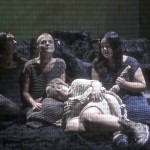
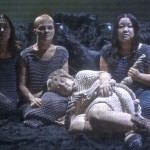
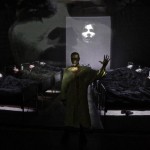
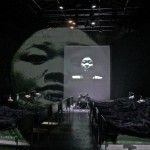
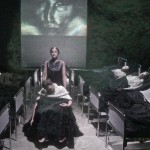
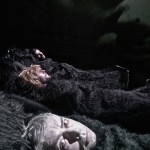
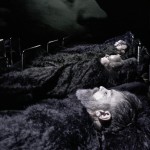
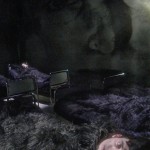
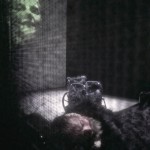
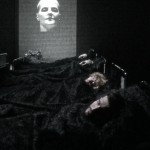
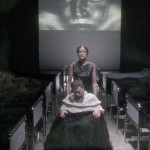
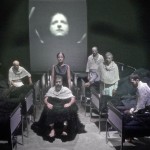

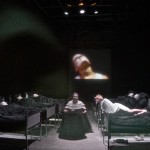
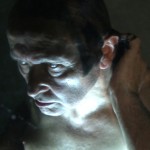
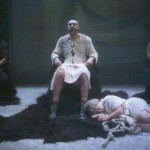
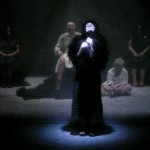
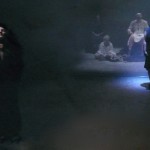
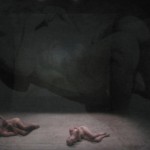
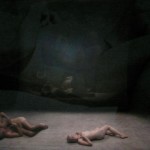
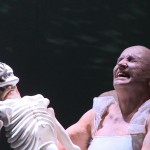
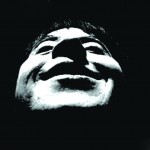
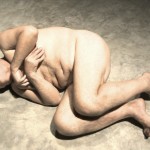
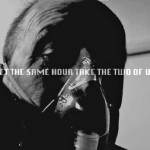
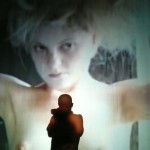

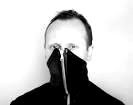
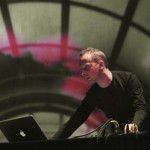
![[cml_media_alt id='4756']Robin Rimbaud this Scanner copy[/cml_media_alt]](https://lenzfondazione.it/wp-content/uploads/2014/11/Robin-Rimbaud-aka-Scanner-copia-300x236.jpeg)

